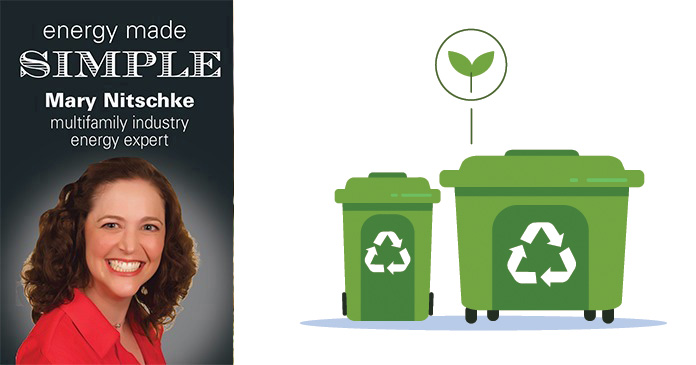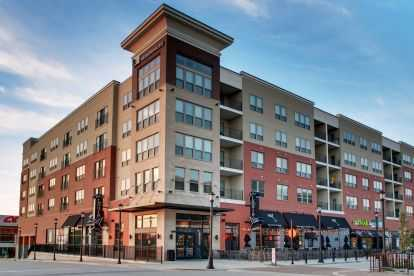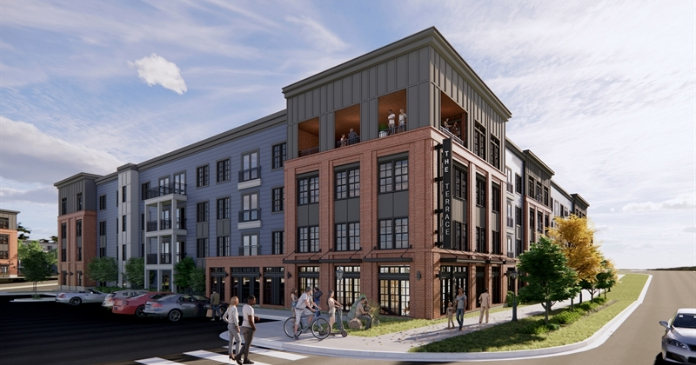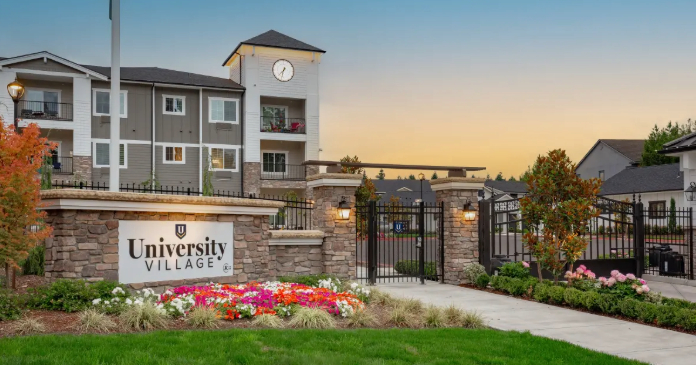As prepared for delivery.
Acknowledgments; Introduction
Thank you, Maren. We are very fortunate to have you leading this great agency. Maren has done a tremendous job, and HUD is grateful for her steady hand at the helm.
As Ginnie Mae celebrates its 50th birthday — and reflects on five decades of providing stability to America’s housing and capital markets — our numbers tell a story that is truly epic in scale. In this time:
- 53 million households have been financed by government loans in Ginnie Mae securities;
- 71 percent of people Ginnie serves have been first-time homebuyers; and
- Our mortgage-backed security portfolio has grown to a balance of roughly $2.1 trillion dollars, comprised of more than 11 million loans.
This success story is one that few would have dared to dream when our nation stared out into the 2008 financial crisis. There were many hard lessons learned during that period, but the end result since then has been 10 years of triumph – where time and again, Ginnie Mae has risen to the occasion, growing each year in size, skill and sophistication.
Back in 2008, Ginnie’s total MBS portfolio stood at less than $500 billion dollars. In the decade since, the portfolio has grown by an astonishing approximately 420 percent. Today, we service a wider variety of issuers; we offer a stronger array of products; and we benefit a broader diversity of institutional investors.
In short, this agency has played a key role in leading America’s housing market from crisis to confidence.
In turn, Ginnie has earned the trust of investors around the world. But we also have an ambitious agenda for reform, especially as it relates to the twin pillars of Ginnie’s plan for the year ahead, which are:
- Our implementation of broad modernization upgrades to the MBS program and platform; and
- Our enhancements to managing counterparty credit risk.
Modernizing the MBS Program and Platform
If Ginnie Mae is to ensure its next five decades provide as much stability and liquidity to our country’s housing markets as the past five decades, it is incumbent on our organization to continually evolve and adapt.
The idea of the need for continuous reform dates all the way back to the Greek philosopher Heraclitus, who, 2,500 years ago, famously observed: “Everything changes and nothing stands still” — and that, therefore, “Change is the only constant in life.”
As a steward of the public’s trust in the housing market, we must always be upgrading, and always be improving.
While Ginnie Mae already possesses a state-of-the-art technology platform, modernization remains one of our top priorities.
Ginnie’s modernization process started nearly 10 years ago as an outgrowth of those “hard lessons” we internalized after the housing crisis. Today, these efforts have been proven to be very successful in ensuring we have a securitization platform that provides a secure, flexible and scalable way to support major business applications, improve user experience, transform business processes, advance access to data, and otherwise adapt to fast-moving dynamics in the housing market.
It is this world-class technology platform, Ginnie Mae’s global brand, and the framework by which the agency oversees and monitors its security, that makes Ginnie Mae an asset in potential housing finance reform efforts. The Ginnie Mae II security has evolved into a highly liquid and well-functioning security, which demonstrates the value of having a diverse set of Issuers with a wide range of business models under a single flagship security.
User Experience
Touching on Ginnie Mae’s modernization efforts in more detail, in just the past year, Ginnie has worked to improve the user experience of our platform for issuers, by rolling several new pool delivery modules — which are the digital applications where the security issuance process begins. We released the Multifamily Pool Delivery Module, which is now in pilot mode; and we will be releasing the Single-Family Pool Delivery Module in December.
We have also introduced two new offerings to Ginnie’s Platinum line of products in the past year:
- One is the Home Equity Conversion Mortgage-Backed Security (HMBS) Platinum securitization, released in March; and
- Another is the weighted average coupon adjustable rate mortgage, released this past December, which provides flexibility for depositors to aggregate pools. It also increases tradeable pool sizes, recaptures orphaned pools, and provides liquidity in a segment of the market that has been experiencing declines. Depositors have told us this new application is both functional and easy to use.
Since Ginnie Mae began modernizing and automating our Platinum securities program two years ago, production of Platinum securities with fixed-rate collateral has risen from $8 billion dollars in fiscal year 2017 to more than $20 billion dollars in fiscal year 2018.
Data Disclosure
The MBS market is one of the largest and most liquid fixed-income securities markets in the world. Every month, global investors and market-makers rely upon loan-level disclosure data to re-establish relative value among alternative fixed-income securities, refine their MBS prepayment models, and adjust their asset allocation strategies.
Ginnie is working hard to streamline these disclosure processes, and more effectively provide data to the investor community.
As a doctor, I am a firm believer in the power of data driven thinking — and letting the evidence, rather than ideology or speculation — guide us in the service of helping others. In medicine, the human life expectancy in the developed world in the mid-19th century was roughly 40 years old. Today, it is nearly 80 years old. And the most significant driver of better health outcomes was an industry-wide switch from using mere intuition to using hard, quantifiable evidence.
The same is true for obtaining better housing outcomes. Housing models are better able to sustain capital markets — and serve the American people — through elevating data above doctrine or guesswork.
Digital Mortgage Ecosystem
One key initiative in our modernization efforts is the creation of a digital mortgage ecosystem — one that encompasses everything from loan applications through securitization — to make the credit markets more available to millions of Americans. Our overarching goal in doing so is to enhance the integrity of Ginnie Mae’s collateral by reducing the risk from defects in loan instruments.
This digital ecosystem will require Ginnie Mae to implement all policies and develop all technological and operational capabilities necessary to take in digital promissory notes and other digitized loan files as acceptable collateral for our securities.
It is an ambitious undertaking, but one Ginnie Mae has proudly committed to fulfilling. As a result, last year, we launched an initiative to incorporate digital mortgages. The first phase of the project includes three steps.
First, there is work to be done in creating policy guidance. With input from federal housing programs, the G-S-Es. the Mortgage Electronic Registration System, technology vendors and industry subject matter experts, Ginnie Mae has worked hard to form an initial policy framework. This framework reflects GSE’s eNote requirements, and sets forth Ginnie’s and issuers’ custodial and loan certification responsibilities.
This summer, Ginnie will publish and solicit stakeholder feedback on a draft outline policy guidance describing the process, technology and document requirements an issuer will need to meet to participate in the upcoming digital mortgage pilot.
This fall, we plan to release our official guidance — coordinating additional policy announcements, as needed, with the federal housing programs that we support.
On Wall Street, there’s a saying called “ABC” — Always Be Closing. Well, at Ginnie Mae, we read our A-B-Cs a little differently: Always Be Collaborating. As I hope these efforts in creating the digital mortgage ecosystem reveal, Ginnie Mae makes a habit of constant outreach to stakeholders, investors, issuers, and the American people who depend on our work so they can buy or refinance homes — as they pursue their own versions of the American Dream.
And the next stage of phase one in our rollout is the actual launch of the pilot. The scope of the pilot will be informed by the stakeholder feedback and draft policy guidance we receive throughout this year. Once the pilot has achieved lift-off, we plan to increase its scale over time while implementing additional system and MBS program enhancements.
Transitioning the MBS Platform to Loan-Level Functionality
In phase two of the digital collateral initiative, Ginnie will develop a new document custody application — as well as new loan delivery and pooling applications — with our key strategic goal being to move from pool-level securitization model to a loan-level program.
Today, our capabilities are like going to a grocery store and buying 10 different types of ice cream. Then, instead of being able to eat any flavor you choose, you have to mix them all together and eat them all at the same time. That may work okay for two or three flavors, but once you get up to a high enough number, you can no longer disentangle all the important differences between the flavors – and at a certain point, you want to be able to differentiate them, as you would when managing a portfolio.
In Ginnie’s situation, our current pool-level orientation causes similar limitations. Most significantly, the same institution must always be the servicer of record for all the loans first combined in a single pool. The servicing rights may be transferred, but the loans in the pool can’t be disentangled. The end result is that the owners of the servicing rights can’t manage their assets efficiently. This inefficiency creates a ripple effect on the desirability and value of the mortgage servicing rights. Neither Fannie nor Freddie have to deal with this constraint, so for Ginnie, it creates a higher cost for government loans when compared to conventional loans.
Issuers often tell us that moving to loan-level functionality is the most important improvement Ginnie Mae can make to remain competitive in this regard. This switch could save a lot of money for issuers, who often feel forced to use workarounds to make up for missing loan-level data. These kind of tactics can be costly or desperate —which carry the risk of causing distortions throughout the market.
If achieved, moving to loan level capability could reap great rewards for Ginnie by better aligning our servicing capabilities with loan characteristics — thereby leveraging efficiency and limiting systemic risk. We also recognize that implementing loan-level servicing could attract new institutions that have been hesitant to invest in government mortgage servicing rights because of its pool-level model.
In previous years, Ginnie has hesitated to jump into this commitment because is – at the end of the day – quite a large undertaking. Our earlier analyses have indicated that only limited steps could be pursued in that direction – but further research has led us to update our prognosis. Our basic belief remains that permanently accepting the pool-level status quo carries too great a risk of relegating the Ginnie Mae platform to second-class status behind the G-S-Es. And that could be detrimental to our mission and the missions of the federal housing programs we serve and support.
Once again, we can look to Heraclitus: “When the world is moving, do you stand still, or do you keep moving too?” The answer is clear: forward motion is the answer now, just as it has always been.
For these reasons — and despite the challenges — we have made loan-level capabilities an achievement Ginnie Mae is committed to pursue. We will launch an initial planning exercise in late 2019. The results of this exercise will shape our requests for the resources we would need to complete this multi-year effort, which we anticipate will require significant expense — and, eventually, a large, dedicated, full-time project team.
The road ahead for our ambitious modernization agenda will not be easy – but few things worth doing ever are. Lasting improvements always require a real investment up front – and Ginnie Mae is leading the way by choosing to invest in a better future with dedicated energy today.
Enhancing Counterparty Risk Management
The second pillar I’ll cover today is the critical work we are doing to enhance Ginnie’s management of counterparty risk – so we continue to operate with the safety and soundness required to carry out our mission, supporting affordable mortgage liquidity throughout all market cycles.
In the past, risk management at Ginnie has meant monitoring compliance with a one-size-fits-all set of program standards. But today, given Ginnie’s expanded role in the mortgage finance system, and the increasing breadth and sophistication of our products, certain risks have been heightened as a result of the sheer size of our program. Though we welcome these changes, they also require us to continually reexamine our practices and push ourselves to evolve.
There are four core questions Ginnie must always be prepared to answer in the affirmative to show our readiness for risk management. They are:
- First, “Was Ginnie Mae prepared for times of stress?”
- Second, “Did Ginnie Mae take the right steps to ensure issuers of all sizes and types were capable of operating through the cycle?”
- Third, “Did our security continue to be attractive to investors around the globe to secure capital into America’s housing finance system?”
- And most importantly, “Were the borrowers who the federal housing programs are intended to serve able to maintain access to affordable mortgage financing without major disruption?”
Perhaps other market participants can afford the excitations of instinctive or impulsive reactions to market upswings or downturns. But Ginnie’s job is to first and foremost to be an anchor for the American people and for our markets — one that provides calm in any storm.
Calm is the basis for confidence — and it’s also how you avoid crisis.
To proactively head off potential threats stemming from counterparty risk, in the past year, Ginnie has published two All Participants Memoranda – or A-P-Ms – on counterparty risk in the past year. We plan to publish an A-P-M with additional counterparty risk standards in July 2019. These memoranda improve our treatment of counterparty risk without unduly affecting credit availability — which is really the best of both worlds.
We also plan to put in place certain protective requirements for issuers who present the greatest risk in the event of a default or extinguishment of their portfolio size.
While we believe these changes have improved our program, there remain some important areas that need more development if we want to be able to say that the mortgage finance industry is protected by an adequate framework of prudential regulation. So we are reviewing three closely-related topics, and — after appropriate analysis and consultation — expect to be implementing policy for each. These are:
- What is the right level of capital and liquidity a non-bank issuer should hold?
- What needs to be in place to evaluate the ability to withstand times of stress?
- And what standards should be developed to improve recovery and resolution planning?
As we move forward, we will determine how broadly new policies should apply. Our review in this space also presents an opportunity to increase engagement with other federal partners and state regulators and coordinate our efforts. After all, that’s just part of our ABC’s: Always Be Coordinating.
Conclusion
To conclude, I’d like to thank each of the amazing leaders, participants and pioneers in the room today, who do so much to make our nation’s housing market a bedrock not just of our national economy, but of sense of national unity, and each citizen’s pursuit of opportunity.
The impact of an affordable mortgage on a young American family goes so far beyond the piece of paper it’s written on. And a home represents so much more than a roof over someone’s head — it’s where children grow up, where communities come together, and ultimately, it is a structure that stands the test of time.
Thank you all for the hard work you do each day, and congratulations to Ginnie Mae for standing the test of time with such grace and adaptability over its half century of successful operations. I look forward to working alongside you as we lead this great institution into the years ahead.
Thank you.













